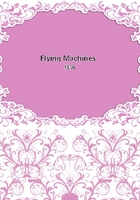
第56章
Among the comparatively new biplanes is one constructed by Willard F. Cody, of London, Eng., the principal distinctive feature of which is an automaticcontrol which works independently of the hand levers. For the other control a long lever carrying a steering wheel furnishes all the necessary control movements, there being no footwork at all. The lever is universally jointed and when moved fore and aft operates the two ailerons as if they were one; when the shaft is rotated it moves the tail as a whole. The horizontal tail component is immovable. When the lever is moved from side to side it works not only the ailerons and the independent elevators, but also through a peculiar arrangement, the vertical rear rudder as well.
The spread of the planes is 46 feet 6 inches and the width 6feet 6 inches. The ailerons jut out 1 foot 6 inches on each side of the machine and are 13 feet 6 inches long. The cross-shaped tail is supported by an outrigger composed of two long bamboos and of this the vertical plane is 9 feet by 4 feet, while the horizontal plane is 8 feet by 4 feet. The over-all length of the machine is 36 feet. The lifting surface is 857 square feet. It will weigh, with a pilot, 1,450 pounds. The distance between the main planes is 8 feet 6 inches, which is a rather notable feature in this flyer.
The propeller has a diameter of 11 feet and 2 inches with a 13-foot 6-inch pitch; it is driven at 560 revolutions by a chain, and the gear reduction between the chain and propeller shaft is two to one.
The machine from elevator to tail plane bristles in original points. The hump in the ribs has been cut away entirely, so that although the plane is double surfaced, the surfaces are closest together at a point which approximates the center of pressure. The plane is practically of two stream-line forms, of which one is the continuation of the other. This construction, claims the inventor, will give increased lift, and decreased head resistance. The trials substantiate this, as the angle of incidence in flying is only about one in twenty-six.
The ribs in the main planes are made of strips of silver spruce one-half by one-half inch, while those in the ailerons are solid and one-fourth inch thick. In the main planes the fabric is held down with thin wooden fillets. Cody's planes are noted for their neatness, rigidity and smoothness. Pegamoid fabric is used throughout.
Pressey Automatic Control.
Another ingenious system of automatic control has been perfected by Dr. J. B. Pressey, of Newport News, Va. The aeroplane is equipped with a manually operated, vertical rudder, (3), at the stern, and a horizontal, manually operated, front control, (4), in front. At the ends of the main plane, and about midway between the upper and lower sections thereof, there are supplemental planes, (5).